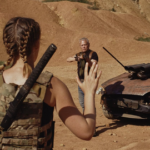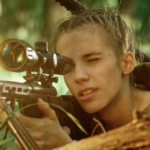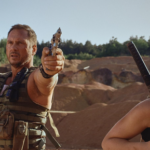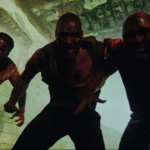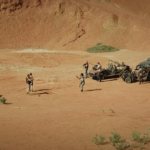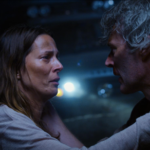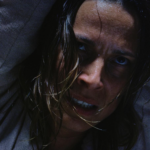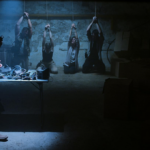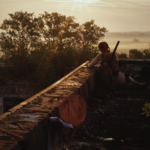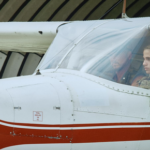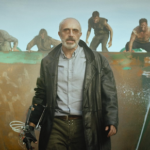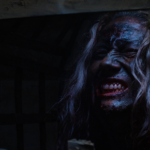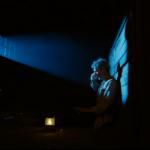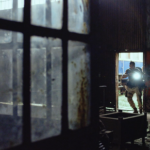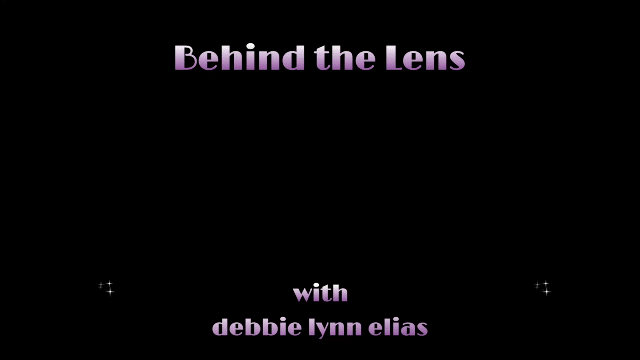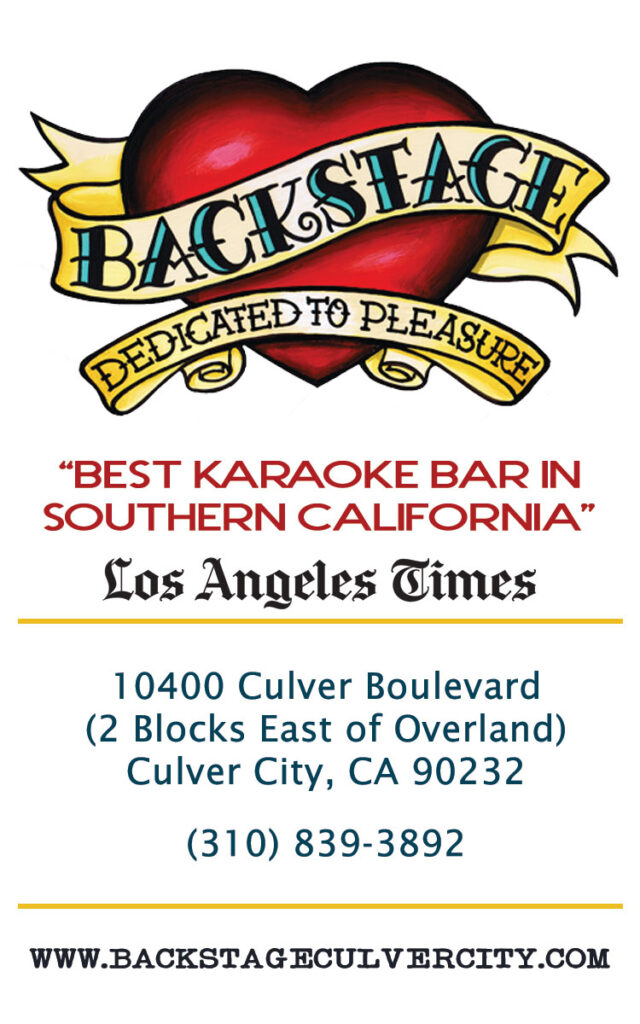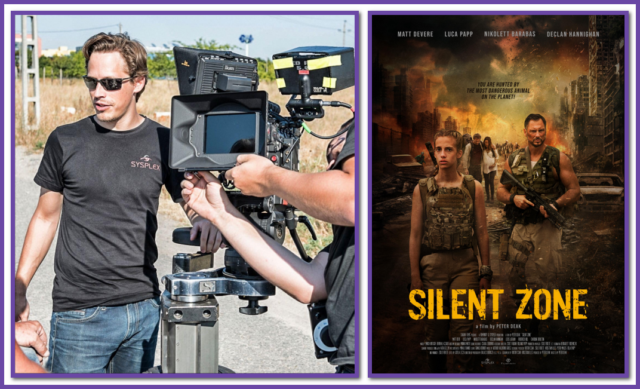
In this exclusive interview, director PETER DEAK discusses SILENT ZONE, his narrative feature film directorial debut, and the challenges of lo-budget/no-budget/micro-budget indie filmmaking.
SYNOPSIS: In a zombie-ravaged world, a resourceful teen and her protector fight for survival, facing relentless dangers and testing the limits of hope and loyalty.
Directed by PETER DEAK with script by Viktor Csak and Krisztian Illes and based on the novel by Csak Welcome to the Silent Zone, SILENT ZONE stas Matt Devere, Luca Papp, Nikolett Barabas, Declan Hannigan, and Alexis Latham.
Discussing SILENT ZONE, described by Peter as a “a low-budget post-apocalyptic zombie road movie”, Peter’s initial plans were for a “small-scale project.” But as he dove into pre-production, he expanded the scope, adding action scenes and stunts. The film was shot in 30 days, with key scenes like the red sand mine action scene completed in one day, emphasizing the importance of preparation and the actors’ physical training. The film’s locations, primarily in Hungary, included former Soviet military bases. As you will hear in this exclusive interview, Peter highlights the challenges of logistics and the need for adaptability during production as essential to a successful production.
From the get-go, Peter was faced with several key challenges during the filming of SILENT ZONE, among them:
- Limited Budget: Originally planned as a low-budget film, Peter had to creatively expand the scope while maintaining cost-efficiency. He overcame this by carefully planning action scenes and utilizing locations within 100 miles of Budapest.
- Shooting Logistics: The 30-day shooting schedule was tight, especially for complex scenes like the red sand mine action sequence, which was shot in just one day. Peter prepared extensively, with actors training for three months to perform their own stunts.
- Location Challenges: The boat colony scene was particularly difficult. Water level changes meant the crew had to travel by small boat, making logistics complicated. Peter had to create the illusion of a crowded town with only 40 villagers and 40 ferals.
- Post-Production Editing: The initial edit was nearly three hours long. Peter had to carefully cut and compress scenes while maintaining the emotional connection to characters and the film’s pacing.
- Adaptability: Unexpected issues like stunt injuries or shooting constraints required Peter to be flexible, reorganizing shots and finding alternative ways to capture the scenes while maintaining the film’s quality.
Overcoming these challenges through meticulous preparation, creative problem-solving, and a willingness to adapt his original vision, Peter was able to stay true to the film’s core narrative.
According to Peter, “My previous experience in commercials and music videos helped me develop a strong visual storytelling approach and efficiency in shooting. Working on shorter formats taught me how to maximize limited resources, plan meticulously, and create compelling visuals quickly. These skills were crucial for SILENT ZONE, especially when shooting complex action scenes in just one day. The technical precision and creative problem-solving from commercials and music videos translated directly into my ability to choreograph action sequences, work with a tight budget, and create a visually dynamic post-apocalyptic world. Essentially, those shorter formats were like a training ground that prepared me for my first feature film, allowing me to be strategic and creative within constraints.”
Authenticity was very important to Peter in the making of SILENT ZONE and as he breaks down the production process, emphasizes several key aspects:
- Location Selection: They used actual abandoned Soviet military bases in Hungary, which naturally looked post-apocalyptic. These locations featured overgrown buildings with trees growing through roofs, creating a genuine sense of decay and nature reclaiming human spaces.
- Visual Design: The cinematography focused on wide shots that showcased the environment, allowing viewers to see the authentic deterioration of structures and landscapes.
- Practical Effects: Instead of relying heavily on CGI, they used real makeup and stunts. The actors trained for three months to perform their own action sequences, adding to the film’s authenticity.
- Detailed Production Design: From the zombie makeup to the set decorations in locations like the cabin, every element was carefully crafted to feel real and lived-in.
Peter specifically noted that their goal was to create a world that would genuinely look like it had been abandoned for decades, making authenticity a core principle in the film’s visual storytelling and production approach.
We always hear realtors talk about “location, location, location” when buying or selling a home. The same thing applies to filmmaking, and in the case of SILENT ZONE, location was everything. Shot on location in Hungary, with all locations within a 100-mile radius of Budapest, Peter did the location scouting himself, along with the production manager and writers. Many of the abandoned buildings you see in the film, particularly the empty town scenes, were former Soviet military bases left behind when Russian troops withdrew from Hungary in 1990. These bases included residential buildings, schools, and other infrastructure that had been abandoned for 35 years. The locations were chosen not just for their visual appeal but also for their authenticity. As Peter keenly noted, if a zombie apocalypse actually happened, these abandoned Soviet military sites would likely look exactly like the film’s settings. The team was flexible, often adapting script scenes to fit particularly interesting locations they discovered during scouting. The boat colony scenes were shot near a shore where water levels and logistics presented additional challenges but ultimately contributed to the film’s realistic post-apocalyptic aesthetic.
An important aspect of SILENT ZONE is the visual grammar, and for that, Peter turned to his longtime cinematographer, Academy Award winner Balazs Doboczi, with whom he has collaborated since 2008. (Sadly, Balazs passed away and didn’t get to see the final color-graded version of the film, though he did see the edited cut.) Having developed a close collaborative relationship where they can almost intuitively complete each other’s creative thoughts, for SILENT ZONE they specifically wanted to use wide shots and wider lenses to show actors within their environment, believing the setting was crucial to the storytelling. They aimed to utilize the environment as much as possible, creating visual compositions that emphasized the scale and desolation of the post-apocalyptic landscape.
Some of the most difficult scenes to shoot were the boat colony scenes. With limited resources for these particular scenes – only about 40 ferals/zombies, 40 villagers, and around 8 stunt performers – the logistics were complicated by the changing water levels, which meant they could only access the boat town by a small boat, thus limiting the number of factors and crew they were able to transport, and making even lunch breaks very time-consuming. There was great difficulty in creating the illusion of a large, crowded environment with such a small number of people which forced them to carefully choreograph the background action and strategically move actors and extras to make it appear like there were many more people present. He was particularly concerned about avoiding shots where the same feral/zombie or villager would be recognizable in multiple scenes.
The narrow corridors of the boat colony added to the tension but also made the shooting more complex. Peter had to be very precise in how he positioned and moved the limited number of performers to create the sense of a chaotic, crowded environment during the action sequences.
Working with his editor, Attila Lecza, the initial editing challenge was significant, with the first edit being almost three hours long. The most difficult part of the edit was deciding what to skip or leave out of the final film. They wanted to ensure proper exposition in the first act and emotional character connection in the second act. Peter noted they compressed some scenes and completely cut others while trying to maintain a balance between action and character moments. The goal was to keep the audience emotionally attached to the characters while maintaining a fast-paced narrative. They strategically included a few slower scenes, like the moment with the baby and Megan’s necklace, to provide brief respites from the intense action. The editing process focused on creating a dynamic rhythm that would keep viewers engaged without losing the emotional core of the story.
And more, including casting, performance, and a breakdown of the film’s themes!
TAKE A LISTEN. . .
by debbie elias, exclusive interview 03/21/2025
SILENT ZONE is now available On Digital and On Demand.

